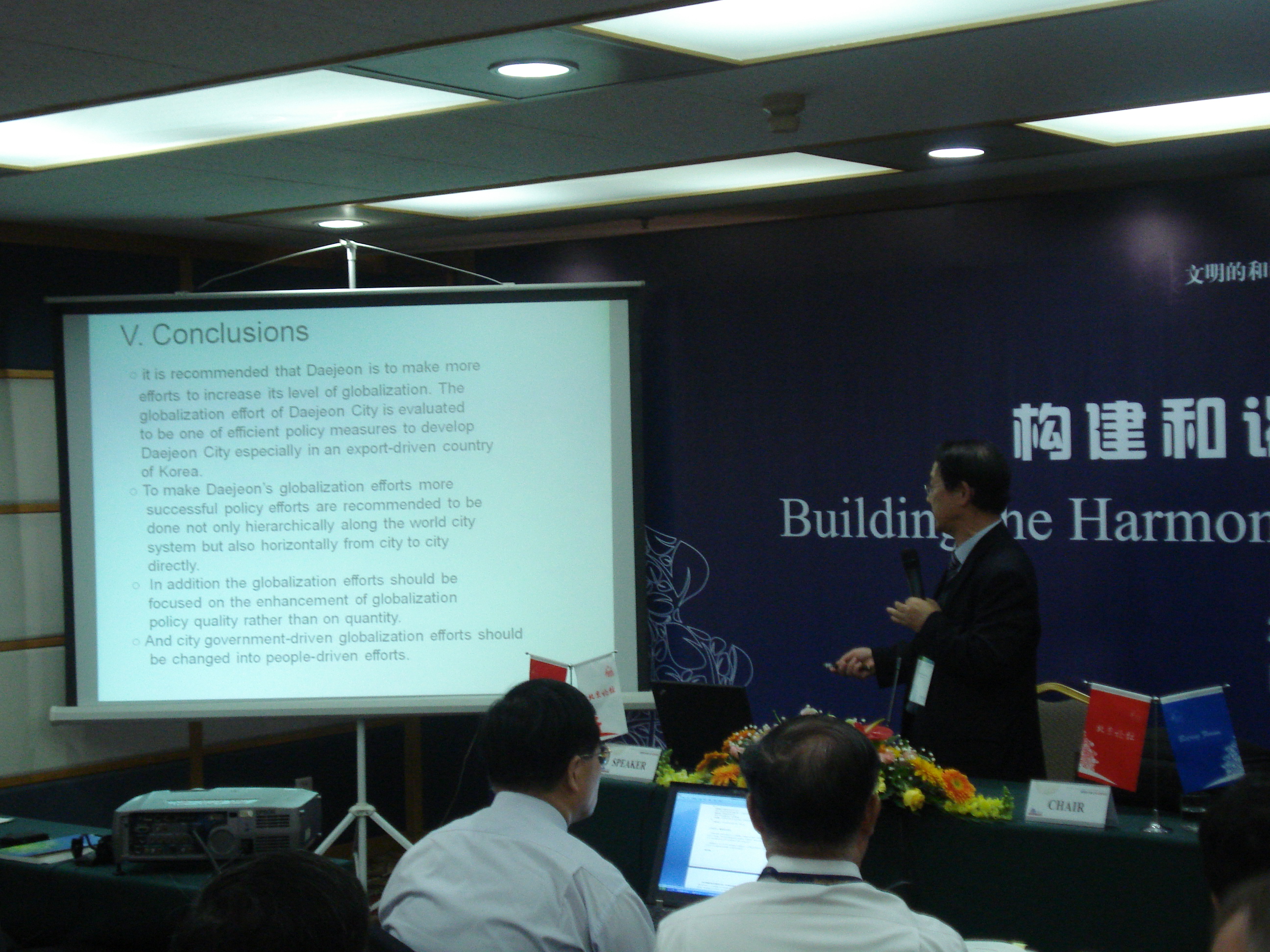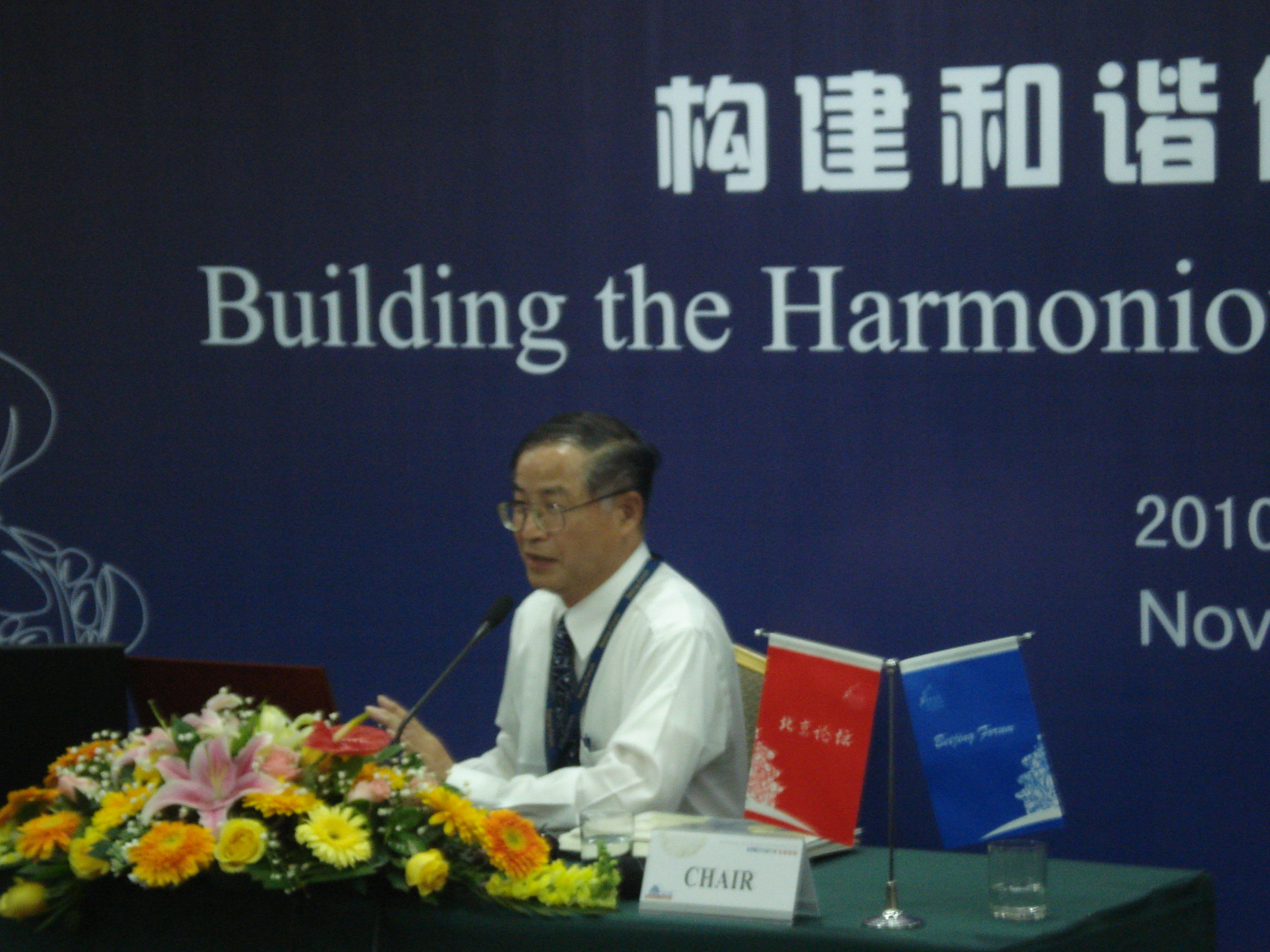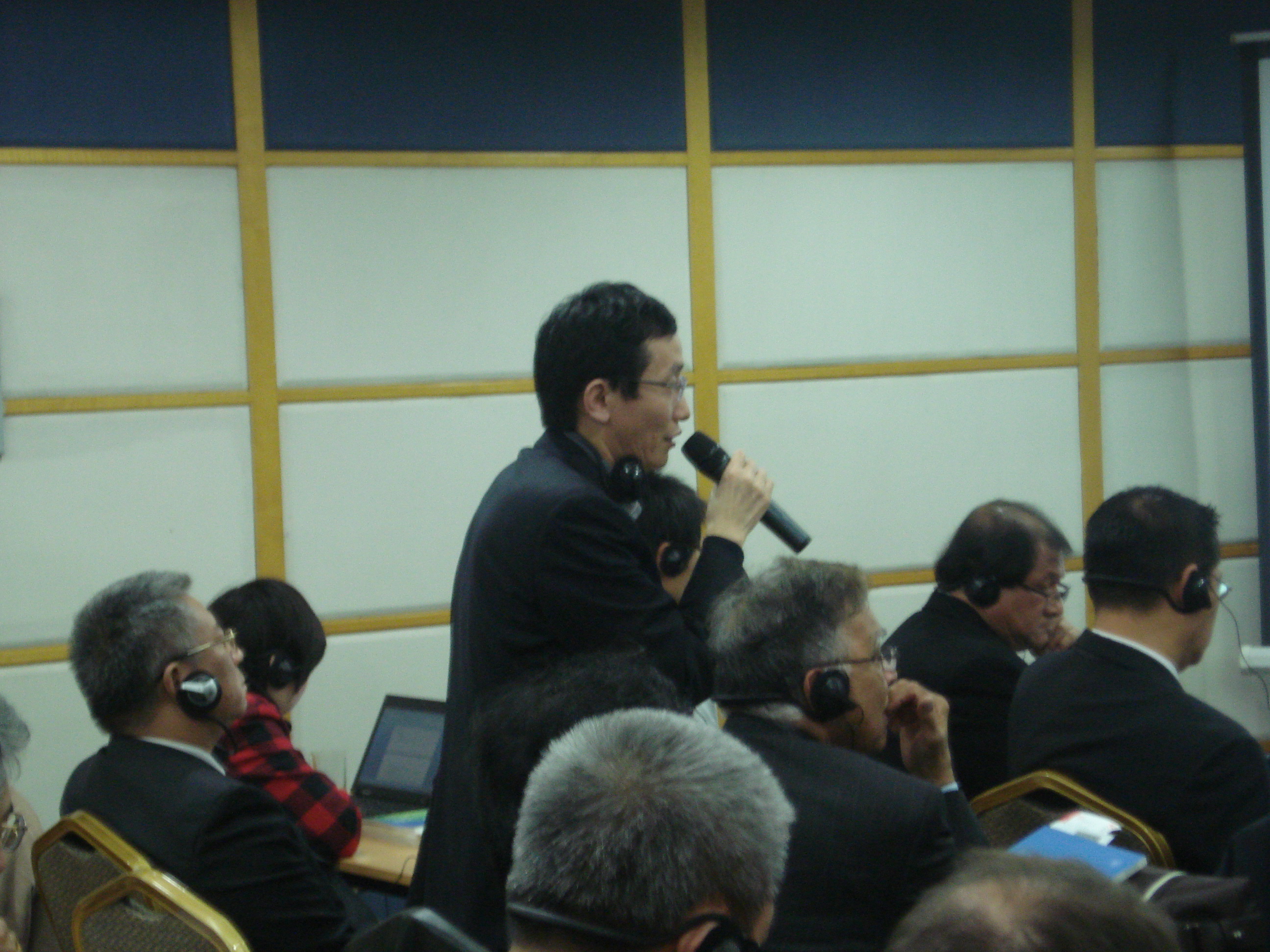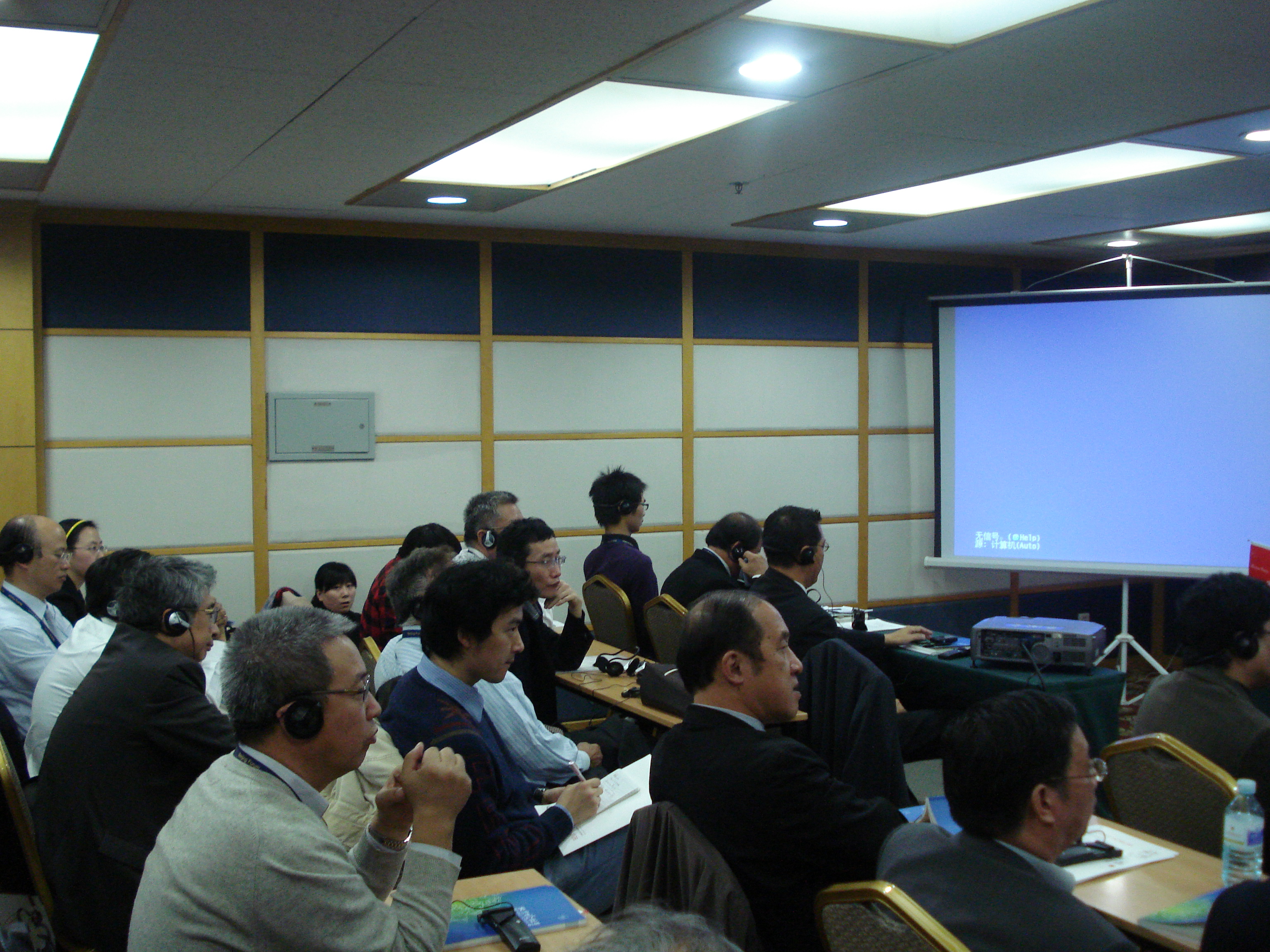Peking University, Nov. 8, 2010: On the morning of Nov. 6, the international scholars carried on their discussions on the subject of "Building the Harmonious World City" at Peking University (PKU) Yingjie Overseas Exchange Center. Professor Sui Dianzhi from the Ohio State University, and Professor Takatoshi Tabuchi from the University of Tokyo, acted as chairs respectively in the two halves of the session.
The first lecturer, Professor Lu Huapu from Tsinghua University, introduced the development direction and roadmap of Chinese urban transportation. He was worried about the negative effects of traffic jams as well as new challenges accompanied with the coming people-based transportation system containing both urban and rural areas. To settle the problems, he emphasized the concept of "sustainable and green traffic," and gave a set of solutions.
Professor Quentin Farmar-Bowers was an agricultural expert from La Trobe University in Australia. He divided the food supply system into the demand side and the supply side. The former one – supplying the increased food demand – appeared a tough trouble because of many interrelated and complex issues. For instance, the loss of farmland and water supplies to other uses such as housing, recreation, and conservation of the natural environment. As a reference, he analyzed the current Australian food system where genetically modified food (GMF) was not quite popular as a way to relieve food shortages.
Professor Joseph Edward O. Idemne from College of Management, the Philippines, enlightened the audience with his analytical method of a novel geometric network. In his model describing the renowned Puerto-Princesa Subterranean River National Park, the complex natural and social factors were assumed as virtual nodes of different sizes.
The next speaker, Professor Kim Tae-myung from Hannam University of the Republic of Korea (ROK), made policy recommendations of development strategy for Daejeon City as a local example. In his five-grade rating system of cities, Daejeon belonged to the fourth, and thus had the potential to grow into a world city. “The municipal government should strengthen its cooperation in more fields with world cities,” Professor Kim added.

Prof. Kim Tae Myung at his presentation
Professor Masahisa Fujita from Konan University was known to put forward "space economics" first. At the forum, he talked about two specific examples of cultural innovations being developed in Japan — the pop culture created by the young generation and the "rural revolution" taking place in Kamikatsu (a remote village in Shikoku Island). In his eyes, East Asia had the advantage of populations containing the seeds of innovations. He also noticed that creation of new ideas could be promoted through multi-directional interactions of cultures.

Prof. Masahisa Fujita at his lecture
Additionally, Professor Sui Dianzhi raised an important point that the ultimate aim of world cities was to meet residents' spiritual needs. From his perspective, the further urban development would have to satisfy people from the most basic living needs to the top demand of self-fulfillment.
After the lectures, the scholars extended their discussion to other aspects of world cities, such as population, communications, and environmental protection.
.

Prof. Ni Pengfei from the Chinese Academy of Social Sciences asking questions

The attentive audience
Reported by: Jin Ludi
Edited by: Chen Miaojuan